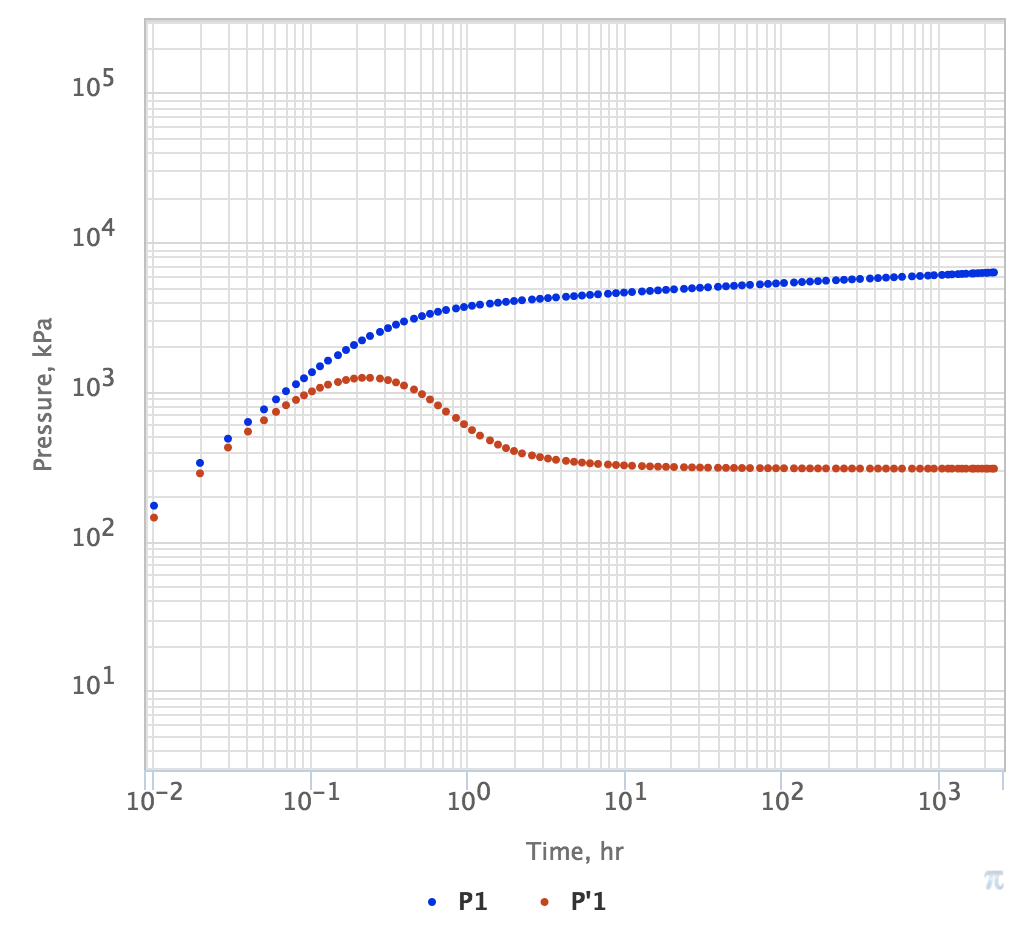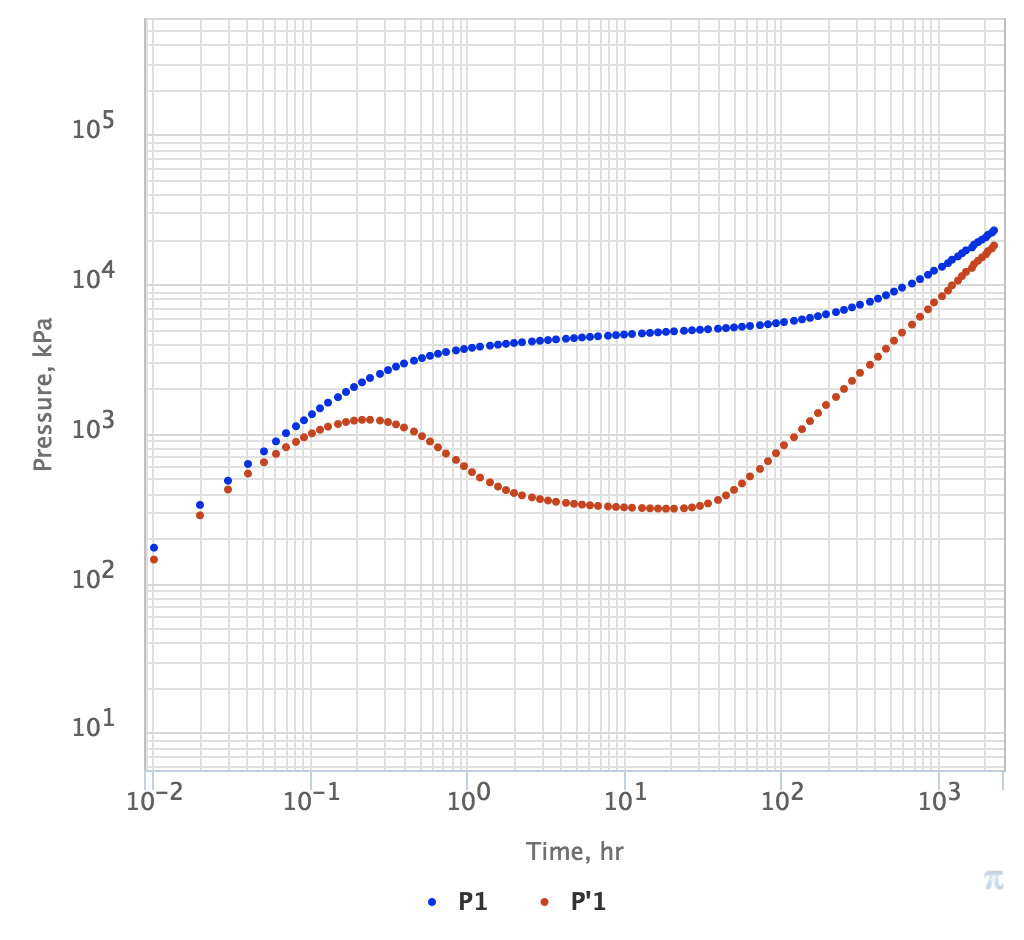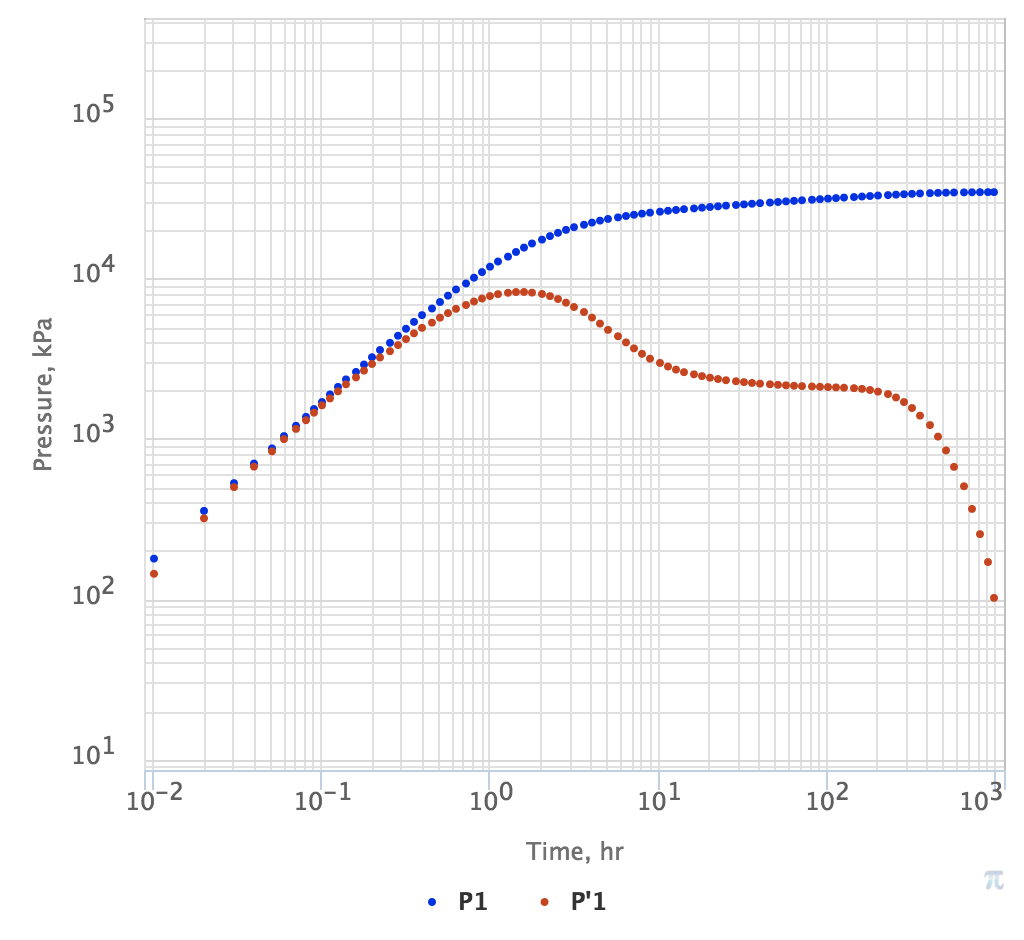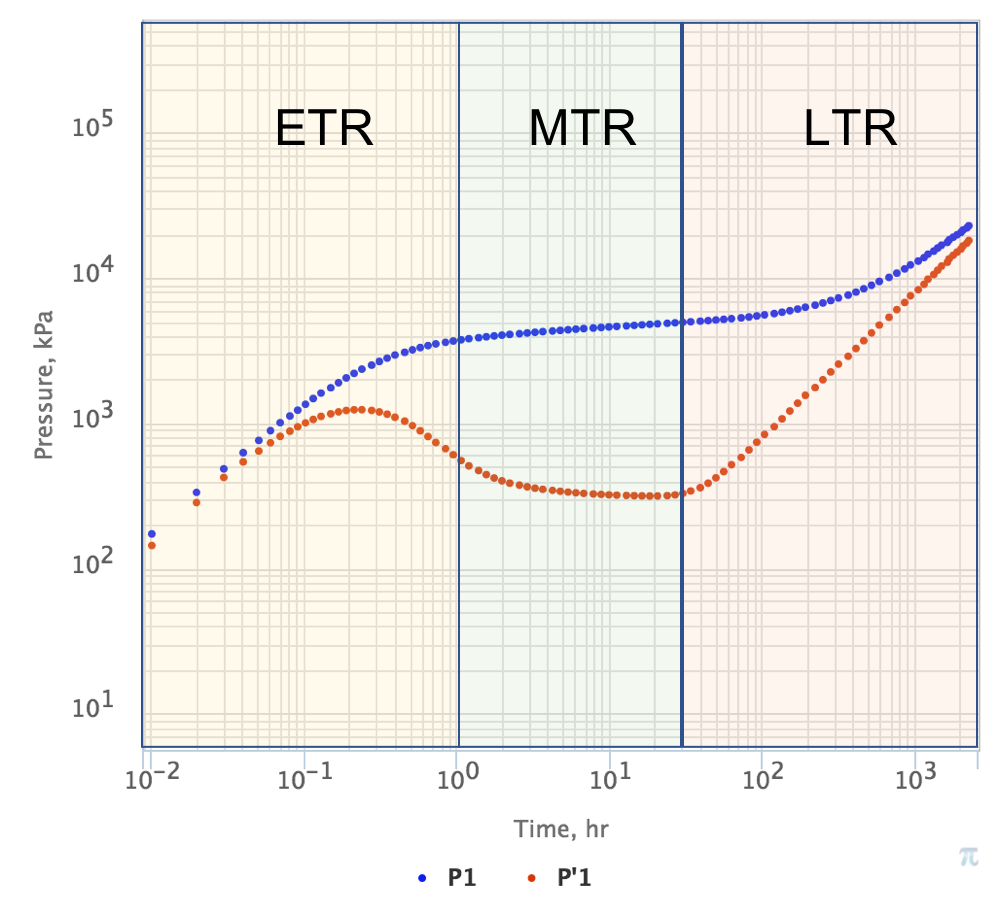Pressure log-log plot of unit-rate drawdown survey pressure drop \delta p(t) = p_{wf}(0) - p_{wf}(t) and pressure log-derivative \displaystyle p'(t) = t \, \frac{d p_{wf}}{d t} (see examples at Fig. 1 – Fig. 3).
Traditionally the pressure drop on pressure log-log plots is denoted by p(t) which is the same as \delta p(t): p(t) = \delta p(t) but since it's a consistent practise it usually does not create a confusion among well test engineers.
The pressure log-derivative p'(t) provides a zoomed insight into the pressure diffusion dynamics at different times which helps identifying the pressure diffusion model behind the pressure variation.
Fig. 1. PTA Diagnostic Plot for vertical well in single-layer homogeneous reservoir without boundaries (IARF). Pressure drop is in blue and log-derivative is in red. | Fig. 2. PTA Diagnostic Plot for vertical well in single-layer homogeneous reservoir with impermeable circle boundary (PSS). Pressure drop is in blue and log-derivative is in red. | Fig. 3. PTA Diagnostic Plot for vertical well in single-layer homogeneous reservoir with constant pressure boundary (SS). Pressure drop is in blue and log-derivative is in red. |
See PTA Type Library for a wide range of typical PTA Diagnostic Plots.
The usual convention is to split pressure transient response in three major time intervals (see also Fig. 4):
| Early Time Response (ETR) | Middle Time Response (MTR) | Late Time Response (LTR) |
|---|---|---|
| Borehole and hydraulic fracture effects | Unconstrained reservoir flow | Reservoir boundary effects |
Fig. 4. PTA Diagnostic Plot with ETR, MTR and LTR time zones. Pressure drop is in blue and log-derivative is in red. |
See Also
Petroleum Industry / Upstream / Subsurface E&P Disciplines / Well Testing / Pressure Testing / Pressure Transient Analysis (PTA)
[ Well & Reservoir Surveillance ] [ Pressure Diffusion ]



